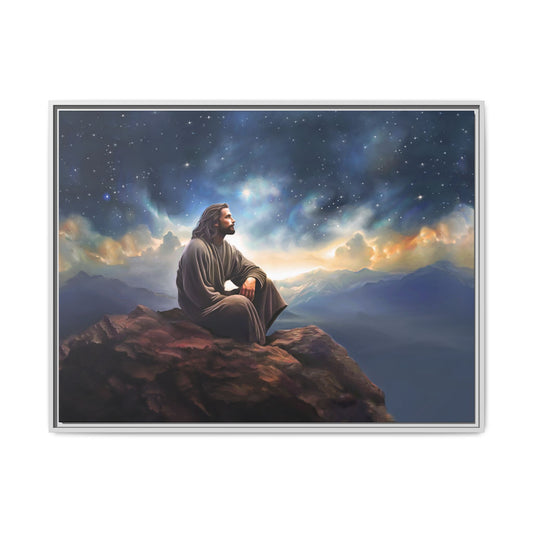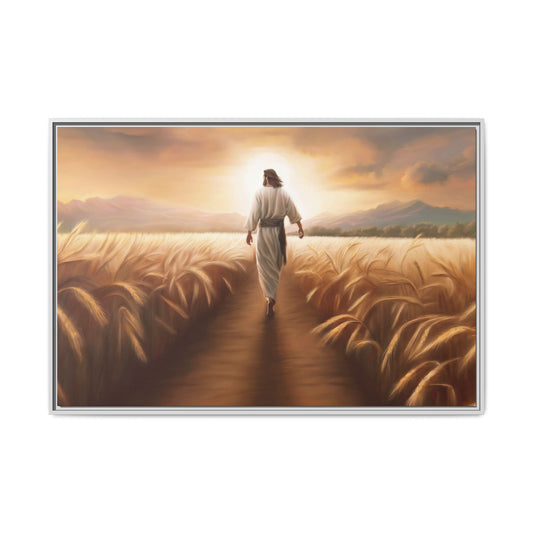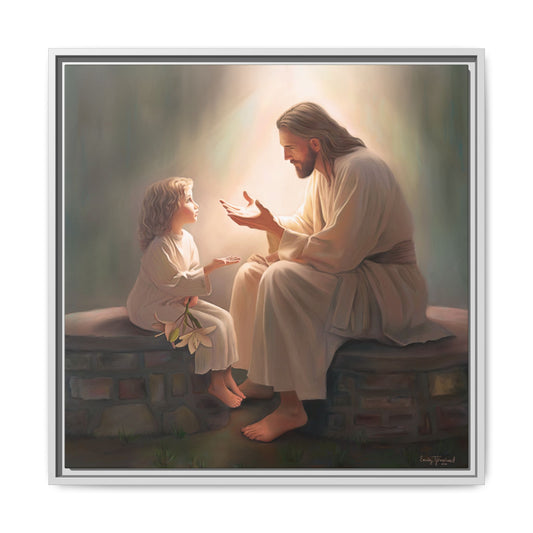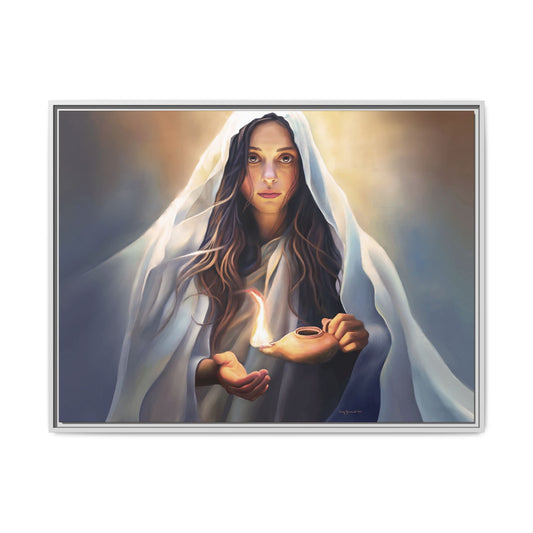
As we sift through the annals of art and religion, the myriad depictions of the Heavenly Father shimmer before us like stars in an ever-expanding universe. We've collectively embraced these images, which not only embody our spiritual ideals but also mirror the diverse epochs from which they originate. In our pursuit, we've found a tapestry rich with insight, each portrayal of
God the Father revealing new facets of our relationship with the divine. These images, steeped in historical context and artistic fervor, shape our perceptions and fuel our discussions about the nature of the sacred.

They beckon us to consider how the lens of humanity has refracted the image of the divine through the ages, and what these shifts in portrayal suggest about our evolving understanding of spirituality. As we venture further into this realm, let's pause to reflect on the silent dialogues between these works of art and the beliefs they aim to express, for within them lies a profound narrative waiting to be further unraveled.
Key Takeaways
- The Christian concept of God the Father evolved from the Jewish concept and became distinct by the Middle Ages.
- The concept of God as the Father of Jesus is distinct from God as the creator and Father of all people.
- Trinitarian Christianity believes in the Trinity - God the Father, God the Son (Jesus), and God the Holy Spirit.

Heavenly Father Pictures through history
Throughout history, images of the Heavenly Father have played a pivotal role in the Christian faith, serving as a focal point for worship and adoration. Visual representations have been crucial in helping believers connect with the divine, transcending the limitations of language and culture. In our exploration, we'll examine the significance of these depictions and the various ways they've evolved and influenced Christian worship.

Opening statement about the significance of heavenly father pictures in Christian faith
As we explore the depiction of God the Father in Christian art, it's crucial to recognize that these images have profoundly shaped the faith and devotion of believers across centuries. They serve as visual interpretations of scripture and as a means to bring us closer to the mysteries of the church. A brief overview:
| Era |
Significance |
| Early Christianity |
Avoided depictions as per Jewish tradition |
| Medieval Period |
Began symbolic representation |
| Renaissance |
Humanized portrayals emerged |
| Modern Times |
Diversity in artistic expression |
| Future Prospects |
Evolving with cultural perceptions |
These portrayals remind us that our service to others is an echo of the compassion and love that emanates from our Heavenly Father's image, inspiring us to live out our faith actively.

Explanation of the importance of visual representations in worship and reverence
Visual representations of the Heavenly Father play a pivotal role in worship, offering believers tangible images to venerate and reflect upon the divine. As we seek to honor and serve others, these images serve as powerful tools for deepening our faith and guiding our actions. Here's why they're so important:
- Aid in Focus: They help congregants center their thoughts on God during worship, fostering a sense of spiritual presence.
- Teach and Inspire: Artistic depictions can illustrate scriptural events, bringing lessons and virtues to life in a way that resonates with our hearts.
- Cultural Connection: They provide a visual language that transcends words, uniting diverse communities in common reverence.
Through these visual representations, we're reminded of our purpose to serve and the boundless love of our Heavenly Father.
Brief overview of the different aspects to be covered in the article
In this article, we'll explore the evolution of depictions of the Heavenly Father, from ancient symbolism to Renaissance masterpieces and modern interpretations. The image of the Heavenly Father has been a central figure in religious art and worship, serving as a visual connection for those dedicated to serving others and seeking a deeper understanding of the divine.

Understanding the Concept of Heavenly Father Pictures
As we explore the concept of Heavenly Father pictures, we'll uncover the layers of meaning behind these depictions. We'll trace their historical roots to understand how portrayals of God the Father have evolved over time. It's crucial to recognize how these images have shaped and reflected the beliefs of various Christian denominations throughout history.
Definition and meaning of heavenly father pictures
Understanding the concept of 'heavenly father pictures' involves recognizing that these images are artistic representations intended to symbolize God's attributes as the Father in Christian faith. These representations aren't meant to be literal but rather inspire those of us devoted to serving others to embody His virtues in our lives. The definition of these pictures extends beyond mere art; they carry profound spiritual significance. Here's what they often depict:
-
Omnipotence: God the Father's all-powerful nature, guiding us to trust in His strength.
-
Compassion: His boundless love and mercy, encouraging us to extend the same to others.
-
Wisdom: His infinite wisdom, reminding us to seek His guidance in our service.
Heavenly father pictures serve as visual reminders of these divine qualities.
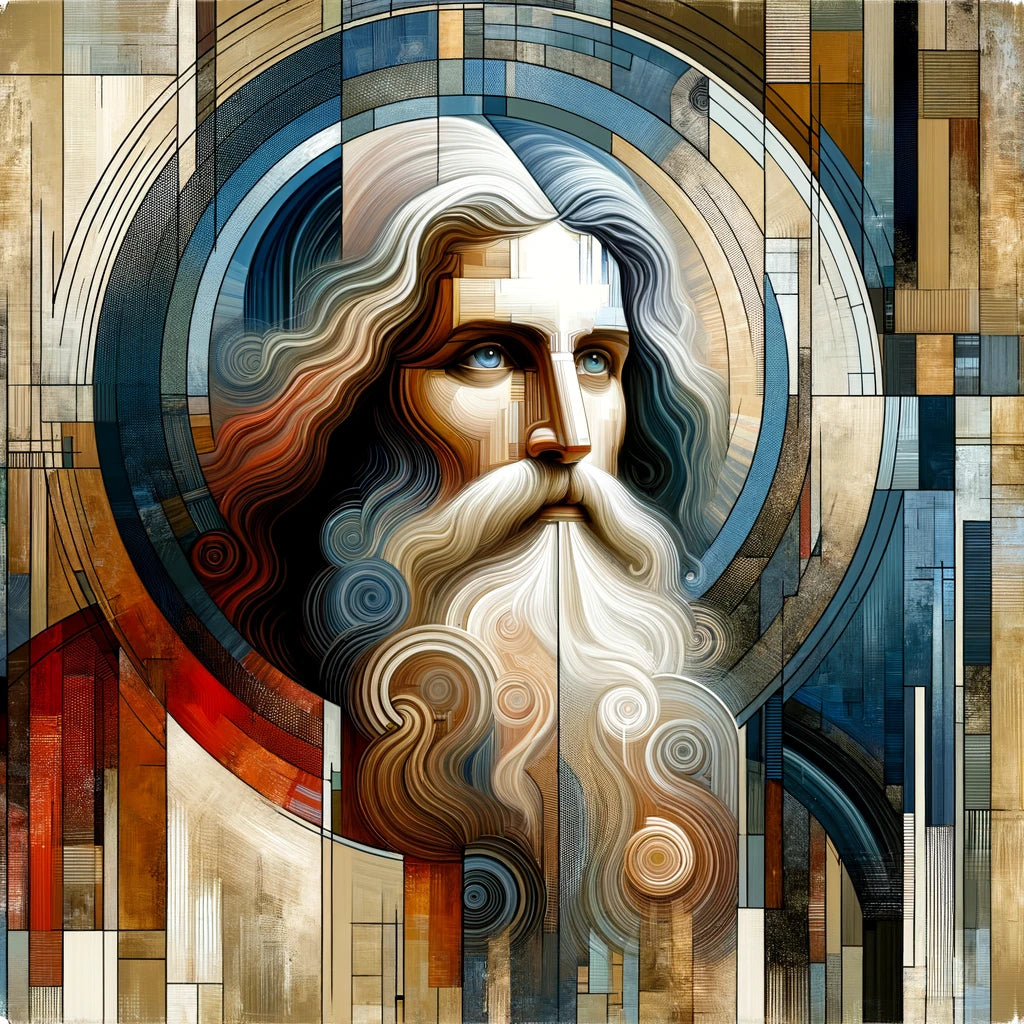
Historical context and origins of portraying God the Father
Throughout history, depictions of God the Father in Christian art have evolved, reflecting various theological and cultural understandings of the divine. Yet, as our desire to serve others and depict the Heavenly Father grew, artists began to craft more personified images, drawing inspiration from scripture and tradition. These portrayals aimed to inspire the faithful, fostering a sense of closeness to the divine that would encourage and support our mission of serving the world with love and compassion.
Significance of heavenly father pictures in various Christian denominations
The depiction of the Heavenly Father holds diverse significance across Christian denominations, reflecting their unique doctrinal beliefs and artistic traditions. For those of us devoted to serving others, these heavenly pictures are more than mere images; they're tools for teaching, inspiration, and fostering a sense of family within our congregations. Consider these aspects:
- Teaching the Faithful: Heavenly images often serve as visual aids in religious education, helping to illustrate complex theological concepts.
- Inspiring Worship: Artistic representations can move the heart, encouraging a deeper emotional and spiritual connection to the divine.
- Strengthening Community: Such pictures can reinforce the idea of the church as a family under one heavenly Father, promoting unity and shared identity.
Through these images, we seek to embody the love and compassion that define our faith.

Depicting the Heavenly Father in Art
We've encountered a range of artistic styles and techniques in our journey through depictions of the Heavenly Father. Let's now examine the iconic images that have shaped our understanding of God the Father throughout history. These representations haven't only reflected the spirituality of their times but have also influenced the collective imagination of believers.
Different artistic styles and techniques used in heavenly father pictures
Artists across centuries have employed diverse styles and techniques to visually represent the Christian Heavenly Father. These depictions are more than mere art; they serve as a visual sermon, teaching and reminding us of the fatherly nature of God. Here's how these images have evolved:
-
Iconography: Early Christian art used symbolic forms to convey the sacredness and omnipotence of the Father.
-
Renaissance Realism: The shift to realism in the Renaissance brought about human-like representations, capturing the benevolence and majesty of God.
-
Modern Abstraction: Contemporary artists often choose abstract or symbolic techniques to express the ineffable qualities of the divine Father.
Through these artistic styles and techniques, we've sought to honor and serve by visually interpreting the Heavenly Father's essence, encouraging reflection and connection among believers.

Iconic representations of God the Father
We'll explore how traditional iconography has shaped our view of God the Father, uncovering the symbolism and hidden meanings behind these ancient works. From depictions of divine fatherhood and love to modern adaptations, we'll see how artists over time have expressed this heavenly figure. Contemporary artistic expressions bring fresh perspectives, reflecting how the image of the Heavenly Father continues to inspire and evolve.
Traditional iconography in Christian art
Throughout history, depictions of the Heavenly Father in Christian art have varied widely, reflecting evolving theological concepts and artistic traditions. We've seen the Almighty as an all-powerful, bearded figure.
Portrayals emphasizing His relationship with Jesus. And abstract representations aligning with the belief that God is beyond human comprehension. These images
inspire us to serve, reminding us of God's omnipresence and our role in manifesting His love on earth.
-- Symbolism and hidden meanings in ancient iconic art
Delving into the realm of iconic art, we find that ancient depictions of God the Father are imbued with rich symbolism and hidden meanings. Our understanding deepens as we serve others by sharing these insights.
| Symbol |
Meaning |
| Eye |
Divine omniscience |
| Triangle |
Holy Trinity |
| Sun Rays |
Christ's radiance |
Through iconic art, we connect more intimately with our faith's profound layers.
-- Iconic representation of fatherhood and divine love
In exploring the iconic representations of God the Father in art, we witness a visual narrative of divine love and fatherhood that has been shaped and reshaped across centuries. Fatherhood symbolizes guidance and care. Divine love manifests as boundless and unconditional. Iconic representation connects us to these eternal truths, inspiring service and compassion in our daily lives.

Modern interpretations and adaptations
Examining modern depictions of the Heavenly Father in art reveals a diverse range of interpretations that reflect contemporary spirituality and artistic innovation. These modern interpretations and adaptations of heavenly father pictures encourage us to serve others by broadening our understanding of the divine. They challenge us to envision a Heavenly Father that resonates with today's multifaceted world.
-- Contemporary artistic expressions of heavenly father pictures
Contemporary artists reimagine the Heavenly Father through a tapestry of styles, each infusing modern sensibilities and cultural contexts into their depictions. As we serve others, we recognize:
- Heavenly Father pictures symbolize guidance and protection for all children.
- Contemporary artistic expressions reflect diverse global beliefs.
- These images inspire community, compassion, and care.
We connect deeply with these visual narratives, finding shared humanity and divine love.
-- Impact of evolving cultural and social contexts on depictions of God the Father
As we explore the myriad ways artists represent the Heavenly Father, it's evident how cultural and social shifts have profoundly shaped these depictions throughout history.
| Era |
Emotion Evoked |
| Medieval |
Awe |
| Renaissance |
Curiosity |
| Enlightenment |
Questioning |
| Modern |
Diversity |
| Contemporary |
Inclusivity |
In our service, we honor these shifts in cultural contexts, ensuring our heavenly father pictures reflect the evolving depictions of God the Father.
Finding Inspiration in Heavenly Father Pictures
We often find that images of the Heavenly Father stir deep spiritual emotions and foster a profound connection to the divine. As we examine the impact of these sacred depictions, it's clear that they can evoke a powerful emotional response that strengthens devotion. Many individuals share personal accounts of how pictures of the Heavenly Father offer comfort and guide them through life's challenges.

The role of heavenly father pictures in inspiring spiritual connection and devotion
Heavenly Father pictures serve as visual anchors, deepening our spiritual connection and devotion by embodying the divine presence in tangible form. As we gaze upon these sacred images, we're reminded of our purpose to serve and love one another, just as we're loved by our Creator. The pictures become more than just art; they transform into tools that inspire and guide us in our daily lives. Here are three ways these images enrich our spiritual journey:
- They remind us of the eternal love and care our Heavenly Father has for each of us.
- They encourage us to reflect on the divine qualities we aspire to embody.
- They help center our thoughts on serving others, fostering a community bound by faith and compassion.
Examining the emotional response to visual representations of God
Visual representations of God often elicit profound emotional responses, stirring the soul and igniting a sense of divine connection within us. When we behold images of the heavenly father, it's not just our eyes that see; our hearts feel deeply, too. These emotional responses can inspire us to greater acts of compassion and service, as we're reminded of the boundless love and grace that the divine embodies. Through visual representations, we find a reservoir of motivation for our own journeys of faith and service. Whether it's in the gentle eyes of a painting or the outstretched hands of a sculpture, we perceive a call to mirror that same unconditional love in our actions towards others.
Personal testimonies from individuals who find comfort and guidance through heavenly father pictures
How do images of the Heavenly Father bring comfort and guidance to believers, shaping their daily lives and spiritual experiences? As we seek to serve others, we've found that these sacred pictures have a profound impact on our spiritual journey. Here's how they assist us:
- Encouraging Prayer: They inspire us to converse with God, deepening our prayer life and connection to the Divine.
- Offering Comfort: In moments of distress, they remind us of God's eternal presence, providing solace and hope.
- Providing Guidance: They serve as a compass, guiding our decisions and actions in accordance to God's will.
These images aren't just decorations; they're visual prayers, a source of comfort, and a map for guidance that steer us towards altruism and compassion.

Theological Perspectives on Heavenly Father Pictures
We'll begin by exploring different theological stances on depicting the divine, recognizing that representations of God as a father have sparked diverse opinions throughout history. Next, we'll examine biblical references that contribute to the imagery of God as a father, shedding light on how these images align with scriptural teachings. Lastly, we'll consider how artistic depictions of the Heavenly Father align with or challenge theological concepts across various Christian traditions.
Different theological stances regarding visual representation of the divine
Throughout history, Christian denominations have held varying views on the appropriateness of depicting God the Father in art and imagery. Our exploration of these theological stances reveals a spectrum of beliefs regarding visual representation of the divine:
- Iconoclasm: Some traditions, like certain Protestant groups, reject any physical depiction of God as idolatrous, emphasizing God's transcendent and ineffable nature.
- Iconodulism: Conversely, Eastern Orthodox Christians embrace icons, viewing them as windows to the divine that aid in worship and veneration.
- Regulated Representation: The Catholic Church allows for artistic depictions, but with caution to avoid suggesting God's essence can be fully captured.
We're committed to respecting these diverse perspectives as we serve and learn from one another's rich traditions.

Biblical references related to the imagery of God as a father
In examining biblical references, it becomes clear that the imagery of God as a father is deeply rooted in both the Old and New Testaments, serving as a central metaphor for God's relationship with humanity. The Bible repeatedly presents God as the father of
Jesus Christ and the adoptive father of all who believe. One poignant verse that encapsulates this is when Jesus teaches to pray, 'Our Father in heaven' (Matthew 6:9), inviting us to share in his relationship with the Father. As we strive to serve others, we're reminded that we're all children of this Heavenly Father, called to reflect his love and compassion. This powerful image encourages us to see each person as a sibling, deserving of dignity and care, just as a good father would want for his children.

Can heavenly father pictures be consistent with theological teachings?
Jumping into the realm of religious art, we find that depictions of the Heavenly Father are deeply intertwined with Christian theological teachings. These images serve as a visual language that communicates the following key concepts:
- The Paternal Relationship: Heavenly Father pictures illustrate the intimate relationship between God and humanity, reflecting the theological teaching of God as a loving and caring parent.
- The Trinity: Art often shows the Heavenly Father alongside Jesus Christ and the Holy Spirit, symbolizing the unity and distinctiveness within the Trinity, a central doctrine in Christian theology.
- The Incarnation: By depicting the Heavenly Father with Jesus Christ, art underscores the theological belief in the incarnation, the mystery of God becoming man to dwell among us.
In serving others, such images remind us of our call to emulate the love and compassion of our Heavenly Father.
Promoting Worshipful Expressions of Art
As we explore the portrayal of God the Father in art, we encourage artists to craft respectful and meaningful representations that resonate with worshippers.
Encouraging artists to create respectful and meaningful heavenly father pictures
Throughout history, artists have sought to express the divine mystery of the Heavenly Father. Today, we encourage them to continue this tradition with respectful and meaningful artwork that promotes
worshipful expressions of art. We believe these heavenly father
pictures can serve as a profound way to inspire and uplift those who seek to serve others. Here are a few guidelines we propose:
-
Representation Matters: Portray the Heavenly Father in a way that reflects His divine nature without confining Him to our limited human understanding.
-
Promote Unity: Create artwork that transcends cultural and denominational boundaries, fostering a spirit of inclusivity and reverence.
-
Encourage Contemplation: Design heavenly father pictures that invite viewers to ponder deeper spiritual truths and their personal relationship with the divine.
Guidelines for artists in capturing the essence of God the Father in their artwork
When artists embark on the sacred task of depicting God the Father, they face the challenge of visualizing an unfathomable divinity within the confines of human artistry. We recognize that capturing the essence of the Heavenly Father requires a delicate balance of reverence and creativity. As artists, we must strive to honor the divine nature of the subject while also engaging the hearts of those who seek to connect with the Almighty. In our creations, we aim to inspire worship and reflection. We can represent the Heavenly Father through symbols and metaphors that resonate with our audience's faith and experiences. We encourage fellow artists to pray for guidance and to seek wisdom in scripture, ensuring our works serve as gateways to a deeper understanding and relationship with God.
Inspiring individuals to appreciate and engage with heavenly father pictures as aids to worship
Recognizing the sacred challenge artists face in depicting God the Father, we now turn our focus to encouraging believers to embrace these visual interpretations as powerful tools for worship. As children of God, we're invited to deepen our relationship with our Heavenly Father through various forms of devotion, including art.
-
Reflect and Pray: Let each image guide your prayers, becoming a visual prompt to converse with God, as encouraged in the Book of Mormon.
-
Meditate on Scripture: Pair the artwork with passages from the scriptures, allowing the combination to open your heart to divine insights.
-
Serve with Love: Allow the depictions to remind you of God's love, inspiring you to serve others with the same compassion and grace.
Through these practices, we can connect more intimately with our Creator.

Consider the Value of Religious Images
Throughout history, images of our Heavenly Father have played a pivotal role in shaping Christian devotion and understanding. We encourage you to consider these depictions as tools that can enrich your spiritual experience and connection with God. In closing, let's acknowledge the profound impact that sacred art has in bringing us closer to the divine.
The significance and impact of heavenly father pictures in Christian faith
The depiction of the Heavenly Father in Christian art has profoundly shaped the faith experience, offering believers visual interpretations of God's transcendent nature and intimate relationship with humanity. As we serve others, these images remind us of the boundless love and authority of our Creator. In recapitulation, let's consider their significance:
-
Inspiration for Worship: Heavenly father pictures have inspired countless worshippers, fostering a sense of awe and reverence.
-
Teaching Tool: These images have been instrumental in educating about the sacred mysteries of the Christian faith.
-
Cultural Impact: The portrayal of the Heavenly Father has left an indelible mark on art, literature, and music, enriching cultural expressions of faith.
In these ways, heavenly father pictures continue to illuminate our understanding and devotion as we walk in faith.

Encouragement for readers to embrace and explore these visual representations in their spiritual journey
Reflecting on the profound impact of heavenly father images in our faith, we're now encouraged to personally engage with these depictions to deepen our spiritual journey. These visual representations serve as a bridge, connecting us to the divine and reinforcing our commitment to serving others. As we explore different heavenly father pictures, we find unique insights and inspiration that fuel our devotion and service. They remind us of the boundless love and care that the Father extends to all creation. Let's embrace these images not just as art, but as tools for reflection, growth, and connection. By integrating these sacred visuals into our daily lives, we can enhance our spiritual awareness and strengthen the selfless love that we're called to share with the world.
Final thoughts on the power of art to deepen one's connection with the divine
Art serves as a profound medium by which we can experience and understand the divine in more tangible terms. Through artistic expressions, we're able to glimpse aspects of the divine that might otherwise remain elusive. Here's how art deepens our connection:
- Art inspires awe and reverence, reminding us of the divine's grandeur.
- It provides a visual language for the ineffable, making the abstract accessible.
- Art fosters a communal experience, uniting us in our quest for understanding.
As we serve others, we recognize the power of art to bridge the gap between the human and the divine. Let's cherish and support artistic endeavors that nurture our spiritual growth, for they hold the potential to illuminate the divine path we all seek to tread.

Frequently Asked Questions
How Have Perceptions of Masculinity Influenced the Depiction of God the Father in Art Throughout Different Historical Periods?
We've noticed that shifting ideals of masculinity have shaped how artists portray God the Father, reflecting societal values and power structures of their times more than any biblical descriptions.
What Controversies Have Arisen Due to the Portrayal of God the Father as an Anthropomorphic Figure in Various Cultures?
We've noticed debates surrounding God's human-like depictions, which sometimes clash with spiritual views. Serving others, we respect diverse beliefs while acknowledging these portrayals' impact on religious understanding and communal harmony.
How Do Artists Reconcile the Biblical Prohibition of Graven Images With the Creation of Visual Representations of God the Father?
We believe artists interpret biblical teachings with creative freedom, expressing spiritual concepts visually while respecting the commandment against idolatry, inspiring rather than replacing worship.
How Have Non-Christian Religions and Secular Philosophies Impacted the Artistic Representation of the Christian God the Father?
We're astounded by how non-Christian beliefs and humanistic ideals have infused the depiction of our Christian God the Father, enriching the tapestry of his portrayals with diverse, universal threads of spirituality and philosophy.
In What Ways Have Technological Advancements in the Digital Age Affected the Creation and Dissemination of Heavenly Father Pictures?
We've embraced digital tools to craft and share images of the Heavenly Father, ensuring wider, instant distribution and engaging communities dedicated to service and faith across the globe with newfound ease.
Conclusion
As we've journeyed through history, we've seen how our depictions of the Heavenly Father mirror our collective soul. We've found comfort in his many faces, each reflecting our deepest yearnings and greatest hopes. It's no coincidence that as we've evolved, so have these sacred images, guiding us closer to the divine. Together, we cherish this art, a testament to our unending quest to understand and connect with our Creator. In every picture, we see ourselves, reaching heavenward.

 As we sift through the annals of art and religion, the myriad depictions of the Heavenly Father shimmer before us like stars in an ever-expanding universe. We've collectively embraced these images, which not only embody our spiritual ideals but also mirror the diverse epochs from which they originate. In our pursuit, we've found a tapestry rich with insight, each portrayal of God the Father revealing new facets of our relationship with the divine. These images, steeped in historical context and artistic fervor, shape our perceptions and fuel our discussions about the nature of the sacred.
As we sift through the annals of art and religion, the myriad depictions of the Heavenly Father shimmer before us like stars in an ever-expanding universe. We've collectively embraced these images, which not only embody our spiritual ideals but also mirror the diverse epochs from which they originate. In our pursuit, we've found a tapestry rich with insight, each portrayal of God the Father revealing new facets of our relationship with the divine. These images, steeped in historical context and artistic fervor, shape our perceptions and fuel our discussions about the nature of the sacred. They beckon us to consider how the lens of humanity has refracted the image of the divine through the ages, and what these shifts in portrayal suggest about our evolving understanding of spirituality. As we venture further into this realm, let's pause to reflect on the silent dialogues between these works of art and the beliefs they aim to express, for within them lies a profound narrative waiting to be further unraveled.
They beckon us to consider how the lens of humanity has refracted the image of the divine through the ages, and what these shifts in portrayal suggest about our evolving understanding of spirituality. As we venture further into this realm, let's pause to reflect on the silent dialogues between these works of art and the beliefs they aim to express, for within them lies a profound narrative waiting to be further unraveled.
















